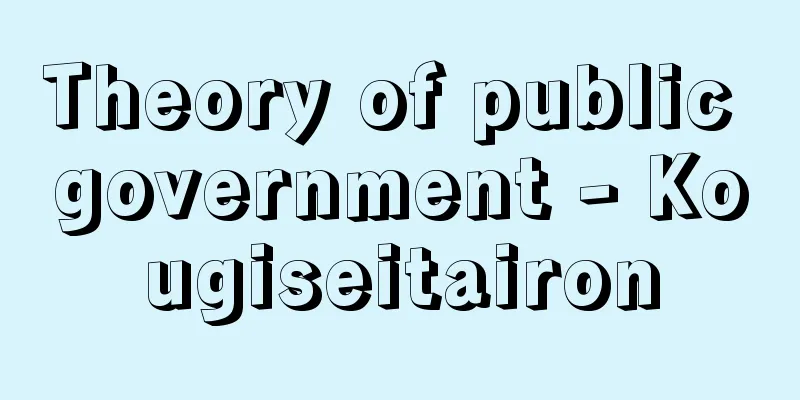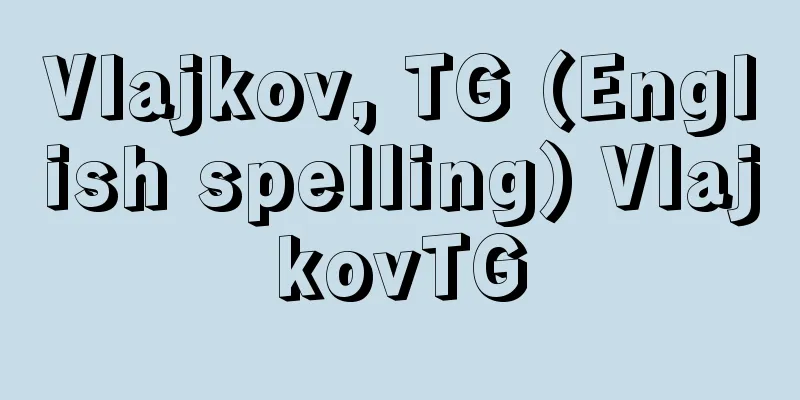Theory of public government - Kougiseitairon

|
This is a concept that was adopted in the Meiji Restoration and late Edo period to integrate power by introducing knowledge of Western parliamentary systems into the decision-making process for national affairs. In the late Edo period, the shogunate attempted to restore the shogunate-han system through the idea of unifying the imperial court and the military and through discussions among the feudal lords in order to overcome the national crisis, but as the movement to overthrow the shogunate progressed, the idea of a public deliberation system based on the introduction of knowledge of European parliamentary systems began to be advocated. The shogunate expressed its misgivings about this idea, but when Shogun Tokugawa Yoshinobu returned power to the Emperor in 1867, the idea of a public deliberation system became a concrete concept. Nishi Amane proposed a draft agenda that placed Tokugawa Yoshinobu as the "Taikun" (Great Emperor) and placed the "Kofuku" (Osaka) and the "Giseiin" (House of Representatives and Upper House) under him. Sakamoto Ryoma's "Senchu Hachisaku" and Tsuda Shinichiro's (Madamichi) "Nihonkoku Sosei" (General System of the Japanese Nation) are also based on the idea of a public deliberation system. After the Boshin War, the Meiji Restoration bureaucrats, who had origins in the anti-shogunate faction, advocated public opinion and proclaimed that the new government would respect it through the Five Articles of Oath. However, as the Meiji government gained power, the logic of government was one of autocratic rule, and the Freedom and People's Rights Movement came to assert the ideals of the Five Articles of Oath. →Related article Restoration of the Monarchy (Japan) Source : Heibonsha Encyclopedia About MyPedia Information |
|
幕末・維新期,国事の決定過程を欧米の議会制の知識を導入して,権力の統合を図ろうとした構想をいう。幕末,幕府は国家的危機克服のため,公武合体論や諸侯会議論によって幕藩体制の立直しを図ったが,倒幕運動が進む中でヨーロッパ議会制の知識の導入による公議政体論が主張されるようになった。幕府はこうした考えに危惧を表明していたが,1867年将軍徳川慶喜が大政を奉還すると,公議政体論は具体的な構想となる。西周(あまね)は徳川慶喜を〈大君〉とし,そのもとに〈公府〉(大坂)と〈議政院〉(上院・下院)をおく〈議題草案〉を立案した。また坂本竜馬の〈船中八策〉や津田真一郎(真道)の〈日本国総制度〉なども公議政体論の発想である。戊辰戦争後,討幕派出身の維新官僚は〈公議輿論〉を高唱,〈五ヵ条の誓文〉によって維新政権がそれを尊重することをうたった。しかし明治政府の権力形成が進むにつれ,有司専制の統治の論理となり,それに対して自由民権運動の側が五ヵ条の誓文の理念を主張するに至った。 →関連項目王政復古(日本) 出典 株式会社平凡社百科事典マイペディアについて 情報 |
Recommend
Tobacco case (cigarette case) - Tobacco case
Smoking equipment. The custom of smoking began at ...
Ken Mizunko (Sword-like dust worm) - Ken Mizunko
Originally, it was a general term for crustaceans ...
Ikuta Shrine
Located in Shimoyamatedori, Chuo-ku, Kobe, Hyogo ...
Pinus lambertiana (English spelling) Pinus lambertiana
… [Makoto Nishida]. … *Some of the terminology th...
Maximilian, Prince of Baden
Born: July 10, 1867 in Baden-Baden Died November 6...
Tama New Town
Located in the southwest of Tokyo, Tama City is a...
Patrai
...Patras (now Pátrai) is the largest city in the...
Shibar
The main rivers are the Kabul River, which origin...
Gorrio, T. (English spelling) GorrioT
…After studying at the Milan Conservatory, he tra...
leopard danio (English spelling) leoparddanio
...They are gentle and swim in groups, so a sligh...
Myxine garmani (English spelling) Myxinegarmani
...Its English name is hagfish (a fish that resem...
International Charter of Physical Education and Sport
An international declaration on physical education...
Chichibu Thirty-Four Temples
Also known as the Thirty-Four Kannon Temples of Ch...
Winslow, C.
…The definition of public health by American Wins...
Dedicated railway - Senyo-tetsudo
A railway that a public entity or a private perso...









